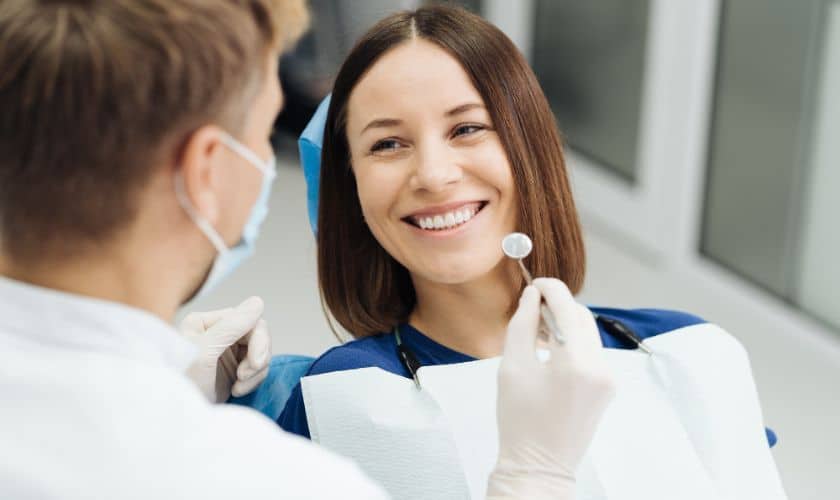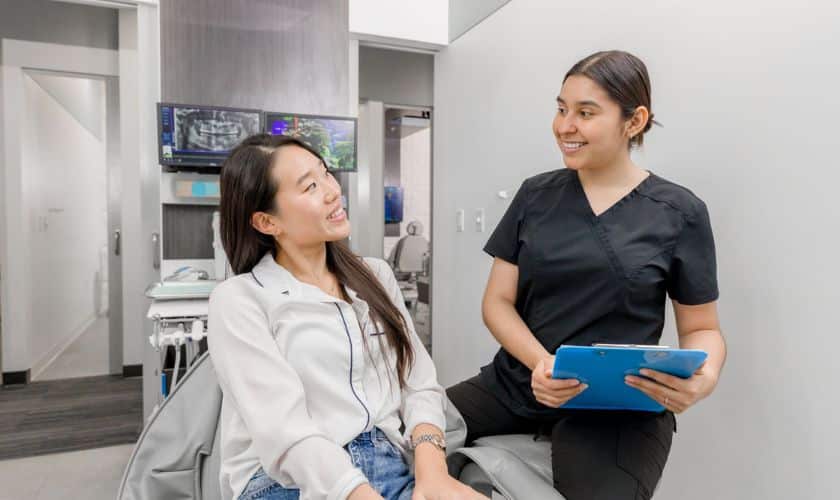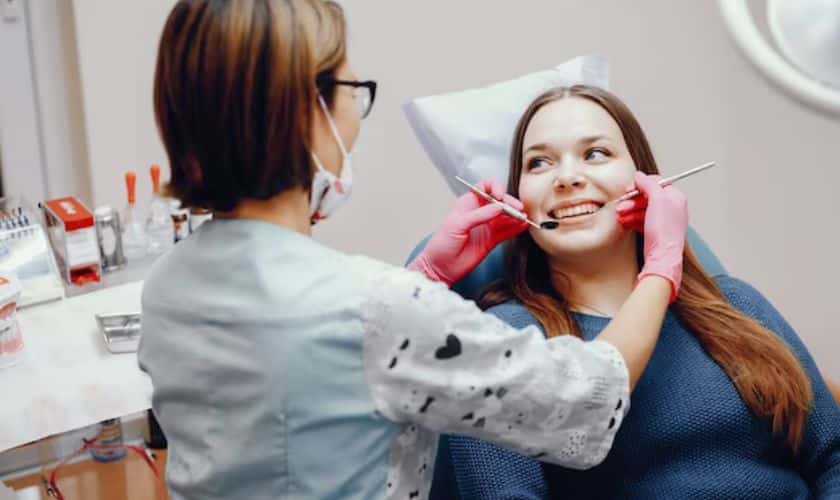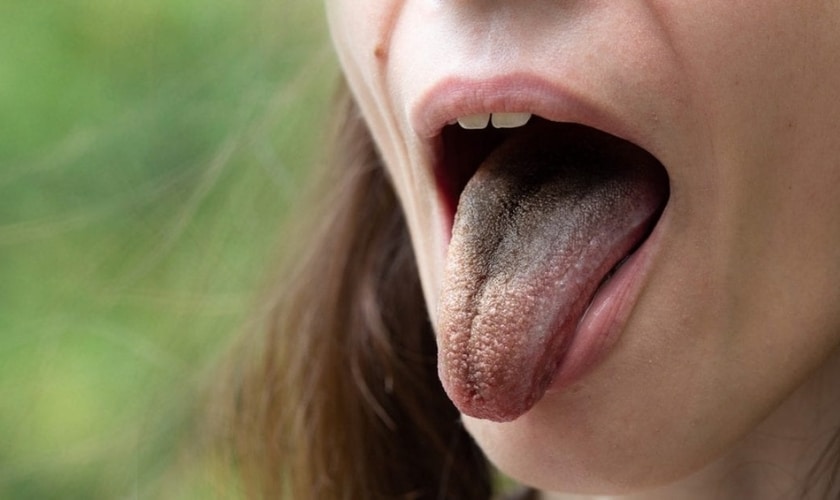Pearl Dental Blog

How Dental Exams in Culver City, CA Can Detect and Prevent Oral Diseases
Welcome to the insightful guide on how dental exams serve as proactive measures for detecting and preventing oral diseases. Dental exams are the cornerstone of oral health, allowing for the early detection of potential issues like cavities, gum disease, or even signs of oral cancer. These exams are conducted with precision and care, encompassing thorough examinations and modern diagnostic tools. By identifying problems in their early stages, preventive measures can be applied, preventing further deterioration and promoting a healthy, confident smile. Let’s delve into the importance of these exams and how they safeguard your oral well-being.
Importance of Regular Dental Exams
1. Early Detection of Oral Issues:
– Regular dental exams facilitate early detection of dental problems like cavities, gum disease, and oral cancer.
– Timely identification enables prompt treatment, preventing the progression of issues and potential complications.
2. Preventive Dental Care:
– Dental exams are a foundation for preventive dental care, emphasizing oral hygiene and lifestyle habits to maintain optimal dental health.
– Professional cleanings and advice on proper brushing, flossing, and diet contribute to preventive care, reducing the risk of dental issues.
3. Overall Health and Well-being:
– Oral health is interconnected with overall health, with conditions like gum disease linked to systemic health issues such as heart disease and diabetes.
– Regular dental check-ups promote not only a healthy mouth but also overall well-being, underscoring the importance of holistic health care.
Components of a Comprehensive Dental Exam
1. Visual Examination of Teeth and Gums:
– Dentists visually assess the teeth and gums, looking for signs of cavities, gum disease, oral lesions, and other abnormalities.
– This examination includes checking the condition of each tooth, the alignment, and signs of tooth decay or damage.
2. X-rays and Diagnostic Tests:
– X-rays and other diagnostic tests, such as intraoral and panoramic radiographs, provide a detailed view of the teeth, roots, and jawbone.
– These images aid in detecting hidden cavities, impacted teeth, bone abnormalities, and other issues not visible during a visual examination.
3. Oral Health Assessment and Dental History Review:
– Dentists evaluate the patient’s oral health history, including past treatments, surgeries, and existing conditions like diabetes or heart issues.
– Discussions about the patient’s oral hygiene routine, dietary habits, and any concerns or discomfort they may be experiencing are crucial components of the assessment.
Common Oral Diseases and Their Early Signs
1. Cavities (Dental Caries):
– Early Signs: Sensitivity or mild discomfort when consuming hot, cold, or sweet foods/drinks, visible white spots on teeth, occasional toothaches without an apparent cause.
– Cavities can progress to toothaches, noticeable pits or holes in the teeth, and severe pain if left untreated.
2. Gum Disease (Gingivitis and Periodontitis):
– Early Signs: Swollen, red, or bleeding gums during brushing or flossing, persistent bad breath, receding gums, slight tooth sensitivity, changes in bite or fit of partial dentures.
– Gum disease can advance to gum recession, loose teeth, deep pockets between teeth and gums, and eventual tooth loss if not addressed.
3. Oral Cancer:
– Early Signs: Persistent mouth sores, patches of white or red in the mouth, lumps or swellings, difficulty swallowing or chewing, changes in voice or chronic hoarseness.
– Oral cancer may progress to severe pain, difficulty speaking or moving the jaw, numbness, and later stages of cancer if not detected and treated early.
Early detection and timely intervention are vital in managing and treating these oral diseases effectively, highlighting the importance of regular dental exams for proactive oral healthcare.
Preventive Measures and Oral Care Tips
1. Regular and Proper Brushing and Flossing:
– Brush teeth at least twice a day using fluoride toothpaste and a soft-bristled toothbrush to remove plaque and food particles.
– Floss once a day to clean between teeth and along the gumline, where a toothbrush may not reach.
2. Balanced Diet and Limiting Sugary Foods:
– Consume a balanced diet rich in fruits, vegetables, whole grains, lean proteins, and low-fat dairy to provide essential nutrients for oral health.
– Limit sugary and acidic foods and beverages to reduce the risk of cavities and acid erosion on tooth enamel.
3. Regular Dental Check-ups and Cleanings:
– Schedule dental exams every six months or as advised by your dentist for routine check-ups and preventive care.
– Professional cleanings help remove plaque and tartar buildup, preventing gum disease and promoting oral hygiene.
Role of Dental Exams in Preventing Oral Diseases
1. Early Detection and Intervention:
– Dental exams enable early detection of potential oral issues such as cavities, gum disease, or oral cancer.
– Timely identification allows for prompt intervention and treatment, preventing the progression of oral diseases to more advanced stages.
2. Customized Preventive Strategies:
– Based on exam findings, dentists develop personalized preventive strategies, including oral hygiene tips and dietary recommendations.
– Tailored advice empowers individuals to adopt habits that mitigate the risk of oral diseases and maintain optimal oral health.
3. Education and Awareness:
– Dental exams provide a platform for dentists to educate patients on proper oral care techniques and the importance of regular check-ups.
– Increased awareness fosters a proactive approach to oral health, encouraging individuals to prioritize preventive measures and adhere to professional advice.
Advanced Techniques in Dental Exams
1. Digital Radiography:
– Utilizes digital sensors to capture dental images with lower radiation exposure compared to traditional X-rays.
– Offers high-resolution images for enhanced diagnosis and a more detailed view of dental structures.
2. Intraoral Cameras:
– Small, high-resolution cameras used to capture images of the inside of the mouth, displaying them on a computer screen.
– Allows for real-time visualization, enabling dentists to show patients areas of concern and explain treatment options.
3. CariVu (Transillumination):
– Uses near-infrared light for cavity detection, making early-stage cavities visible in a highly accurate, radiation-free manner.
– Helps in the early detection of cavities, often before they can be seen on X-rays.
In conclusion, regular dental exams in Culver City, CA are vital for early detection of oral issues, enabling timely intervention. Personalized preventive strategies and advanced techniques ensure optimal oral health. Prioritize dental check-ups to safeguard your smile and overall well-being.





